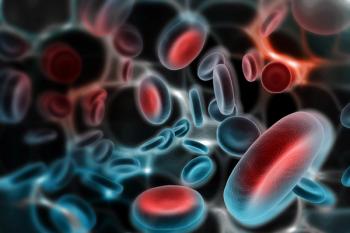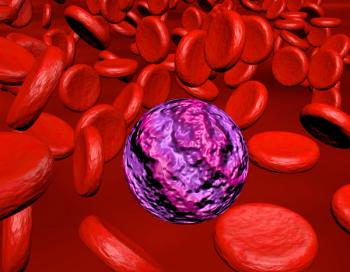
- Oncology Vol 28 No 1S
- Volume 28
- Issue 1S
(P028) Efficacy and Tolerability of Chemoradiation for Lymph Node-Positive Cutaneous Nonmelanoma Skin Cancer
The efficacy and tolerability of chemoradiation (CRT) for locoregionally advanced cutaneous nonmelanoma skin cancer (NMSC) are investigated.
Lora S. Wang, MD, Elizabeth Handorf, PhD, John A. Ridge, MD, PhD, FACS, Barbara Burtness, MD, Miriam Lango, MD, Ranee Mehra, MD, Jeffrey C. Liu, MD, Thomas J. Galloway, MD; Fox Chase Cancer Center
Introduction: To investigate the efficacy and tolerability of chemoradiation (CRT) for locoregionally advanced cutaneous nonmelanoma skin cancer (NMSC).
Methods: We retrospectively reviewed the charts of all patients treated for high-risk NMSC from 2000–2012. Patients were included if they had pathologic NMSC and evidence of regional lymph node (LN) spread and received an LN dissection and/or parotidectomy. Exclusions were: less than 6 months of follow-up or having received palliative treatment only. The primary endpoints for analysis included locoregional control (LRC), progression-free survival (PFS), and overall survival (OS). Kaplan-Meier curves and Cox regression analysis were used for statistical analysis. The study was approved by the institutional review board (IRB).
Results: A total of 53 patients met our inclusion criteria, 15 (28%) of whom received CRT-cetuximab (6), cisplatin (7), carboplatin (1), and paclitaxel (1). Patients treated with chemotherapy were significantly younger (P = .0001), had larger LNs (P = .024), and a trend toward a greater number of LNs involved (P = .075) and LNs dissected (P = .069). With a median follow-up for 2.2 years (range: 0.5–8.5 yr), 20 (38%) patients had evidence of recurrence, with 16 out of 20 patients failing locoregionally as a component of their disease relapse. At 5 years, LRC was 70%, PFS was 61%, and OS was 47%. The PFS of patients who received RT alone was significantly better than those who received CRT (72% vs 32%; P = .009), although the OS was not significant (P = .22). CRT patients had evidence of aggressive disease: 10 of the 15 in the CRT group (67%) had recurrence of their disease at one or more sites, despite both systemic and locoregional treatment. Eight of the 10 (80%) patients in the CRT group with disease recurrences had distant metastasis as part of their recurrence. CRT was generally well tolerated, although not free of side effects, including acneiform rash, neutropenia, tinnitus, decrease in creatinine clearance, severe dehydration, and/or failure to thrive. There was one grade 4 asymptomatic thrombocytopenia but otherwise no other grade 3 or higher toxicities.
Conclusions: In this series, patients who were treated with multimodality therapy for high-risk NMSC did not do well, and those who were selected for trimodality therapy did exceptionally poorly. The natural history of high-risk NMSC is poorly understood, and appropriate patient selection for the intensification of adjuvant therapy needs clarification.
Articles in this issue
Newsletter
Stay up to date on recent advances in the multidisciplinary approach to cancer.


















































































